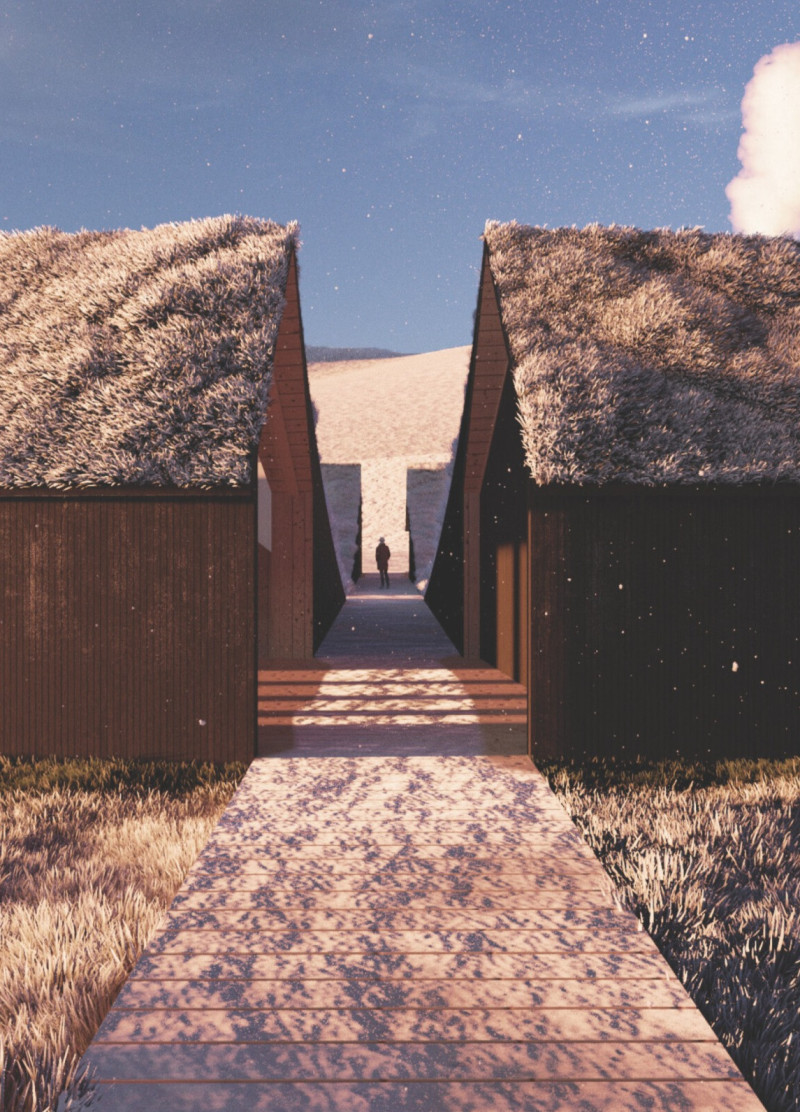5 key facts about this project
At the heart of this project is the idea of connectivity, both within the space and with the community at large. The design emphasizes openness and accessibility, creating a welcoming atmosphere. Large, extensive windows allow natural light to flood the interiors, enhancing the sense of openness and blurring the boundaries between indoor and outdoor spaces. This connection to the outside is further emphasized through strategically placed terraces and gardens, promoting a sense of tranquility amid the urban environment.
The architectural form of the building is characterized by clean lines and a geometric composition that provides a modern aesthetic while remaining grounded. The use of varying heights and stepped facades creates visual interest and promotes dynamic engagement with the surrounding streetscape. This design approach highlights the architect's intent to create a landmark within the community—something that residents can identify with and feel proud of.
Materiality plays a critical role in the overall design philosophy, with careful consideration given to each component. The project utilizes a blend of concrete, glass, steel, and timber, each selected for its durability, aesthetic qualities, and performance characteristics. Concrete serves as the primary structural element, ensuring stability and longevity. Glass is employed not only for its visual appeal but also for its ability to enhance energy efficiency through natural light utilization. Steel facilitates the building's structural framework, allowing for expansive open spaces within. Timber accents are thoughtfully incorporated, adding warmth and a human touch to the otherwise modern material palette.
Unique design approaches are evident throughout the project, particularly in its commitment to sustainability and environmental stewardship. The integration of green roofs and walls not only improves biodiversity but also contributes to the building's thermal performance. Rainwater harvesting systems are incorporated to manage stormwater runoff responsibly, further illustrating the project's dedication to environmental consciousness. The architect has employed passive design strategies to maximize energy efficiency, minimizing reliance on artificial heating and cooling systems, which ultimately reduces the building's carbon footprint.
The interior spaces have been designed with flexibility in mind, allowing for various configurations to accommodate different events and activities. Community rooms can be easily adapted for workshops, meetings, or gatherings, fostering a sense of inclusivity and collaboration. The layout encourages circulation and interaction, with common areas strategically positioned to facilitate socialization.
Ultimately, this architectural project showcases a thoughtful blend of aesthetics, functionality, and environmental responsibility. It stands as a testament to the evolving role of architecture in urban settings, where buildings are not merely structures but integral parts of a thriving community. Readers interested in a deeper exploration of this project are encouraged to review the architectural plans, sections, designs, and ideas that underpin its thoughtful and intentional design philosophy. Engaging with these elements will provide further insight into the architectural strategies that make this project both relevant and responsive to its context.


 Theo Burelle,
Theo Burelle, 























